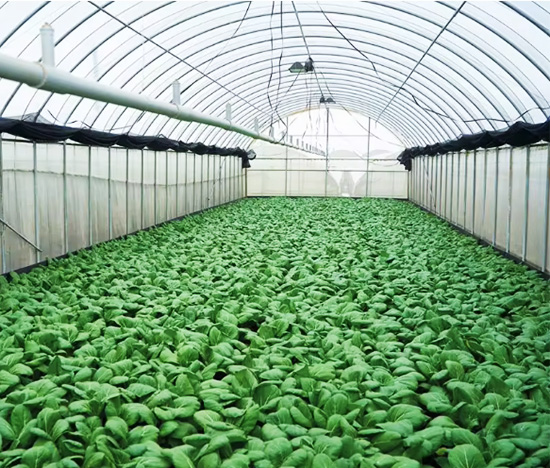Home > Products > Tunnel Greenhouse > Tunnel Film Greenhouse






Because the greenhouse is covered with plastic film, it forms a special microclimate that is relatively closed and different from that in the open air.
Because the greenhouse is covered with plastic film, it forms a special microclimate that is relatively closed and different from that in the open air. When cultivating vegetables in greenhouses, it is necessary to understand the characteristics of the environment inside the greenhouse and take corresponding control measures to meet the conditions for vegetable growth and development, so as to obtain high quality and high yields.

temperature conditions
Plastic film has thermal insulation properties. After covering with film, the temperature inside the greenhouse will increase as the outside temperature increases and decrease as the outside temperature drops. There are obvious seasonal changes and a large temperature difference between day and night. The lower the temperature, the greater the temperature difference. Generally, the daily temperature increase in the greenhouse can reach 3-6℃ in the cold season, and the temperature increase capacity is only 1-2℃ on cloudy days or at night. In the warm spring season, the temperature difference between the shed and the open field gradually increases, and the temperature increase can reach 6-15°C. When the outside temperature rises, the temperature increase in the greenhouse will increase relatively, reaching a maximum of more than 20°C. Therefore, there are high temperature and freezing hazards in the greenhouse, and manual adjustments are required. In the high temperature season, the greenhouse can generate high temperatures above 50°C. Ventilate the whole shed and cover it with straw curtains or build a "pergola" to keep the temperature 1-2°C lower than in the open air. On sunny days in winter, the minimum temperature at night can be 1-3°C higher than that on the open field, and on cloudy days it is almost the same as the open field. Therefore, the main production seasons of greenhouses are spring, summer and autumn. Through thermal insulation and ventilation cooling, the greenhouse temperature can be maintained at a suitable growth temperature of 15-30°C.

lighting conditions
The light transmittance of new plastic films can reach 80-90%, but during use, the light transmittance is reduced by 10-30% due to dust pollution, adsorption of water droplets, film aging and other reasons. The lighting conditions in the greenhouse vary greatly depending on the season, weather conditions, covering methods (shape structure, orientation, scale, etc.), type of film, and age of use. The taller the greenhouse, the greater the difference in irradiance in the vertical direction within the greenhouse. The difference in irradiance between the upper floor of the greenhouse and the ground is as high as 20-30%. In winter and spring, greenhouses extending from east to west have better lighting conditions than greenhouses extending from north to south. The local lighting conditions are almost the same. However, the irradiance difference between the north and south sides of a greenhouse extending from east to west can be as high as 10-20%.

Different shed-type structures have a great impact on the light received in the shed. Although double-layer film covering has better thermal insulation performance, the light-receiving conditions can be reduced by about half compared to a shed covered with a single-layer film.
In addition, multi-span greenhouses and the use of different building materials also have a great impact on light reception (Table 4-2-3). It can be seen from the table that greenhouses with single-span steel and hard plastic structures receive better light, and their light transmittance is only 28% lower than that of the open field. Multi-span sheds have poor light conditions. Therefore, when the materials used in building a shed can withstand a certain load, light materials should be used as much as possible and the structure should be simplified. It should not affect the light reception, but should also be protected, strong, economical and practical. [4]
we’re the best